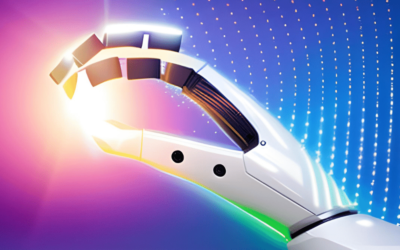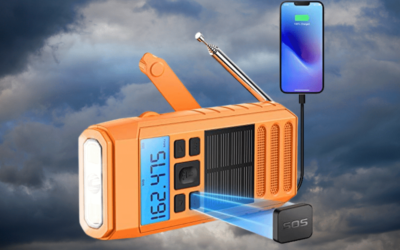Ready to take your golf game to the next level? Or maybe you just need a little help honing in on that perfect shot? Whatever your reason for being here, you’re in luck! We’re about to discuss the best golf rangefinder – and it’s going to give your game the edge it needs. So strap on those cleats and get ready for a hole-in-one!
About Golf Rangefinders
Golf rangefinder technology has become increasingly popular over the past few years, helping avid and casual golfers aim for their targets more accurately. Rangefinders are highly useful for measuring distances and calculating the optimal club selection for any particular shot. Those looking to invest in a golf rangefinder should be aware of the different types, features, benefits and uses that different rangefinders provide.
Rangefinders are broadly categorized into two main types— GPS devices and laser rangefinders. GPS devices use satellite images to detect and provide travel as well as course-related information such as yardages to specific points on a course like greens. On the other hand, laser rangefinders are handheld pieces of equipment used to measure distances of up to 1,000 yards on most models by shooting out an infrared light beam. Laser rangefinders measure the time it takes for reflected light to travel back to its source after hitting an object at a farther distance.
In addition to those two main types, there are three different kinds of golf rangefinder lenses— monoculars, binoculars and telescopes— which all have specific characteristics for different users’ needs. As with any purchase, customers should shop around or consult experts before investing in any particular kind or type of rangefinder device according to their personal requirements or preferences.
Top 5 Golf Rangefinders in 2025
- [1000YDS Golf Rangefinder]-A cost-effective and excellent rangefinder that provides you external angle switch, golf slope compensation (recommended hitting distance), flagpole lock and vibration functions. Also featured with 1000 yards range, ±1 yard accuracy, 0.5S quick measurement, built in Li-ion battery and low battery indicator
- [Golf Rangefinder All leveled Up] Introducing Redtiger range finder golfing:With 1200 yards max measuring, slope switch, magnetic mount and Type-C charging, this distance yardage rangefinder is not only suitable for golf,but also a good choice for hunting, bowhunting.
- Please Note: Customers may receive either the original or 2021 model. While the same product, the two models feature unique colorways.”
- Golf Rangefinder with Slope Switch: Wogree range finder features slope compensation providing more accurate distance readings, especially on hilly courses. The slope switch makes it for Tournament legal play
- BIG STEP FOR GOGOGO SPORT GS03 – We are very pleased to announce that Gogogo Sport GS03 model has made some significant upgrades!!! 1.Max measuring distance: 650 yards→1000 yards; 2. Flagpole Lock distance: 150 yards→250 yards: 3.Optics: normal optocs→upgarded ultra-clear lens: 4.Interface: Old interface → Brand-new exclusive Gogogo Sport interface; 5.Measurment unit: Yard,Meter→Yard,Meter,Feet…..
Types of Golf Rangefinders
Golf rangefinders are invaluable pieces of equipment for any serious golfer, allowing them to precisely measure distances from their position to their target. These measuring devices can come in a variety of shapes and sizes, with different features and capabilities. When choosing the right golf rangefinder for your game, it’s important to understand the different types available so that you can make an informed decision.
Laser Rangefinders – Laser rangefinders use laser beams to accurately measure distances from the user’s current location to their desired target. These devices offer superior accuracy up to around 1000 yards or 915 metres and are able to provide readings within mere seconds of being activated. Laser rangefinders will deliver very precise measurements so that even tiny details such as determining whether a bunker is in range or not can be achieved easily.
GPS Rangefinders – GPS (Global Positioning System) Range Finders work by using satellite signals which are converted into coordinates and processed into real time distances from your current position to the target you have chosen. They also offer additional features such as providing hole-specific information including hazards and doglegs on various golf courses around the world which may be stored on the device itself or accessed through a connected smartphone device via Bluetooth.
Hybrid Rangefinders – Hybrid rangefinder devices offer both laser and GPS capabilities in one convenient package so that you get both the accuracy of lasers plus extra data provided by GPS technology in one device that is relatively affordable. Such units are perfect for course management but do require slight familiarity with both technologies before they can be used effectively during play.
Advantages of Using a Golf Rangefinder
Golf rangefinders are among the most helpful tools for golfers. They allow players to determine yardage to a target or object on the course, and can improve a player’s accuracy in hitting the ball. Rangefinders can make golf more enjoyable and reduce frustration levels as they allow players to calmly analyze their options, making informed decisions on how to play certain shots.
Using a rangefinder while playing golf can improve your accuracy and optimize your play in different ways. Rangefinders have courses pre-loaded, allowing you to quickly get distances without needing to time yourself and scenery manually before shooting. There is also provided real-time course data with wind readings and other fascinating features that give you an advantage on course that adversaries may not have access too. Rangefinders will also help you make better compound shots such as uphill, downhill or running shots that require both distance control as well as special spin factor calculations from launch data with more precise measurements than by eye alone.
A laser rangefinder device offers an instant side-by-side comparison of yardages between locations and gives readings up to 1/10th of a yard, helping you accurately measure distances while playing golf. Not only do they give exact measurements, but they also read much faster than GPS systems because speed doesn’t depend on satellite signals; rather it’s calculated right away based on the way it’s aimed at a specific target shade or object (sometimes even multiple objects at once). Advanced models also take into account other factors such as temperature, altitude and landscape characteristics like incline/decline slices in order to produce even more accurate results while compensating any shift in view due to direct sun reflection from grass or walls etc., making it easier for the golfer in choosing his/her ideal club selection based on release angles fitted around various angles swings combined with distance performances displays accordingly.
How to Choose the Best Golf Rangefinder
Finding the best golf rangefinder can be overwhelming. With a variety of models available on the market, all with different features and capabilities, it’s important to know how to choose the best one for your individual needs. To determine the perfect model for you, ask yourself these questions:
1. What type of rangefinder do I need?
Rangefinders come in two types: handheld and mounted. Handheld models are easy to use, but they require manual aiming. Mounted models are more accurate, but they require mountability onto golfer’s bag or cart and dedicated use with each round of golf.
2. What features are important to me?
Golf rangefinders come with a variety of features such as slope-adjusted readings, multi-target readings, Vibration Reduction Technology (VRT), fog mode, Slope technology for accurate distances on hilly courses etc.,and different magnifications levels that may affect pricier rangefinders more than lower end ones. Consider which ones are most important for your game before investing in one particular model.
3. Do I want GPS functionality?
Modern GPS functionality ensures golfers can acquire more precise distances for tee shots and layups around hazards on the course map accurately displayed on a screen within any given golf rangefinder model. There are plenty of excellent Golf/GPS units from top companies like Garmin and Bushnell that provide both benefits without sacrificing precision or reliability in either realm. The built-in GPS feature keeps track of scorecards over multiple rounds throughout a calendar year while displaying cutting-edge yardages seamlessly updated by satellite in real time at any given course location worldwide making it easy to navigate through any course when playing your next round of golf effortlessly with greater speed and accuracy over ever before!
Features to Look for in a Golf Rangefinder
Rangefinders are essential tools for golfers who want to optimize their game. All rangefinders come standard with some level of accuracy, ranging from general measurements up to yard-precise readings. To get the most out of your rangefinder and find the model that fits your specific needs, there are some important features to consider before making a purchase.
Accuracy: The more accurate your rangefinder is compared to other models, the more reliable and effective it will be. Look for precision readings so you can make well-informed decisions on the course.
Speed: When you’re standing on the tee box or on a putting green, you don’t want your rangefinder taking its time spitting out yardage numbers. Look for a model with fast target acquisition so you can get right on with your game plan.
Durability: As any golfer will tell you, golf courses are highly variable environments, making them hard on any equipment – especially electronic devices like rangefinders. Check out what type of weather resistance and outer shell materials your prospective model has before buying; manufacturers generally provide this info in their product descriptions.
Display: Rangefinder displays vary from OLED readouts to LCDs as well as graphics that indicate accuracy levels; just keep an eye out for models with larger resolution displays if you find yourself squinting a lot when compiling yardage estimates. Many higher end models also come with pictographs or other graphic design elements useful for locating play options like “lay up” spots and hazards without having to guess distances between markers .
Battery Life: Battery life is one issue no golfer wants to worry about in mid-round; fortunately most rangefinders come equipped with replaceable long-lasting Li-ion batteries that can last multiple rounds if used properly (especially those designed specifically with golfing in mind) so check product specs beforehand and make sure that it meets expectations accordingly
Tips for Using a Golf Rangefinder
A golf rangefinder is a useful tool for golfers of all levels to improve their accuracy, distance measuring and club selection. Using a rangefinder will help to ensure you are making the best club selection when trying to reach the pin or the fairway. Here are some tips to ensure you get the most out of your golf rangefinder:
1. Know Your Equipment – It’s important to familiarize yourself with your golf rangefinder before relying on it out on the course. Practice setting it up, testing different ranges and understanding how to interpret measurements accurately.
2. Test Different Settings– Rangefinders come with different settings based on terrain, wind conditions and other natural elements; be sure to test all possible settings during practice so that you understand what they mean and how they can affect your shot selection.
3. Practice Precise Measuring – Many golf clubs measure distance in yards; practice using your rangefinder at specific distances (so that you don’t accidentally overshoot) and be sure that you adjust for any elevation changes before taking your shot.
4. Take Advantage of Slope Technology – If your rangefinder has slope technology, be sure that you understand how this works before using it in competition as it could change shots dramatically depending on elevations.
5. Utilize GPS Technology – Some digital rangefinders have GPS capabilities which enable them to map out each hole so as provide accurate distances; use these features during practice rounds to familiarize yourself with the course layout and become more efficient with distances when playing rounds..
Frequently Asked Questions about Golf Rangefinders
Golf rangefinders offer golfers the opportunity to quickly calculate yardages to the pin, hazards and other features with greater accuracy than traditional methods like sprinkler markers and GPS devices. With so many options available in the market, it is important to ask the right questions to ensure you are getting the best device for your game. Here are some of the most frequently asked questions about golf rangefinders:
Q: What do golf rangefinders do?
A: Golf rangefinders use optics and laser technology to measure distances between two points. The data captured is then displayed on a digital LCD screen or beeped out in yards or meters. This information can help golfers choose clubs based on accurate yardage calculations which will reduce their scores on the course.
Q: Are golf rangefinders legal for tournament play?
A: Most amateur tournaments allow rangefinder use, but as of May 2020, professional tournament play bans their use other than for measuring slope calculations. Make sure you check with your local rules before purchasing a unit for tournament play.
Q: What technologies are used by golf rangefinders?
A: Golf rangefinders typically employ either optically-enhanced optical technology (OEO), which uses photoelectric cells and an eye piece with 10x magnification; hyperbolic paraboloid optics (HSP) which focus lasers into a wide beam; Fresnel shadow displacement (FSD) which magnifies incoming light to improve accuracy; or time-of-flight lasers that use time measurements rather than reflections to determine distances up to 1,000 yards away. Each technology has its own advantages and disadvantages depending on one’s needs and budget.
Q: Will my phone work as a golf rangefinder?
A: Some phones may have apps that let you tap your screen or tilt your device in order to measure distances using GPS software, but these are typically not as accurate as dedicated units due to various sensor noise factors that could result in inaccurate signals from natural sources like clouds or from manmade disturbances like power lines. Additionally, phones may not be able to detect objects located on higher elevations due obstructions such as trees or walls at lower elevations between them and your phone’s position.
Conclusion
It can be difficult to choose the best golf rangefinder for your specific needs, but with so many options on the market, you should be able to find one that meets your criteria. By doing research and considering factors such as features, size, type of unit and price range, you can ensure that you get the right rangefinder for your needs. Keep in mind that higher-end models tend to have more features and may require a larger budget. Additionally, practice makes perfect — check out reviews from fellow golfers and pair them up with actual field tests to make sure you’re getting the most out of your investment before you commit!








